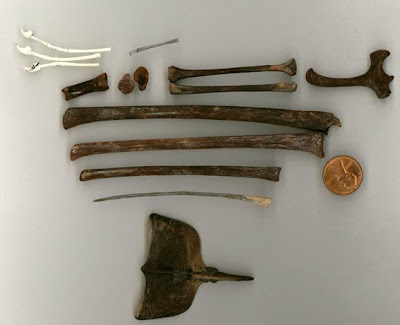The Southbank Centre, Belvedere Road, London is just a short walk from Covent Garden or Westminster and it is within easy access of Waterloo, Charring Cross and Embankment Stations. In late June it is to become home to some of the largest pterosaurs in the UK.
 The University of Portsmouth, supported by the Royal Society are participating in the London Summer Science Festival. This exhibition celebrates the 350th anniversary of the Royal Society. The project involves making life size models of pterosaurs and standing them outside the Royal Festival Hall. Some of the models will be suspended in flying poses and others will be on the ground. Mark Witton is the host of this event and his team are working hard to meet the deadline with some well developed modelling techniques.
The University of Portsmouth, supported by the Royal Society are participating in the London Summer Science Festival. This exhibition celebrates the 350th anniversary of the Royal Society. The project involves making life size models of pterosaurs and standing them outside the Royal Festival Hall. Some of the models will be suspended in flying poses and others will be on the ground. Mark Witton is the host of this event and his team are working hard to meet the deadline with some well developed modelling techniques. The frames for the large models have been engineered on the Isle of Wight by Hoverworks and the main structures are carved from Styrofoam. The construction has been filmed by the BBC at different stages of the work, so it seems that there will be a program in the future to document this rather gigantic modelling project. For anyone who is unsure of the size of these large flying creatures, this exhibition will be a real eye-opener. The exhibits include the largest ground standing model of a pterosaur ever exhibited. The only thing that has come close to this is a composite picture that Matt Wedell produced in 2006 which was updated in June 2008 to include a scale drawing of Mark Witton's Hertzagopteryx image. Good old Photoshop!
The frames for the large models have been engineered on the Isle of Wight by Hoverworks and the main structures are carved from Styrofoam. The construction has been filmed by the BBC at different stages of the work, so it seems that there will be a program in the future to document this rather gigantic modelling project. For anyone who is unsure of the size of these large flying creatures, this exhibition will be a real eye-opener. The exhibits include the largest ground standing model of a pterosaur ever exhibited. The only thing that has come close to this is a composite picture that Matt Wedell produced in 2006 which was updated in June 2008 to include a scale drawing of Mark Witton's Hertzagopteryx image. Good old Photoshop!Images credited to the University of Portsmouth and the BBC.




